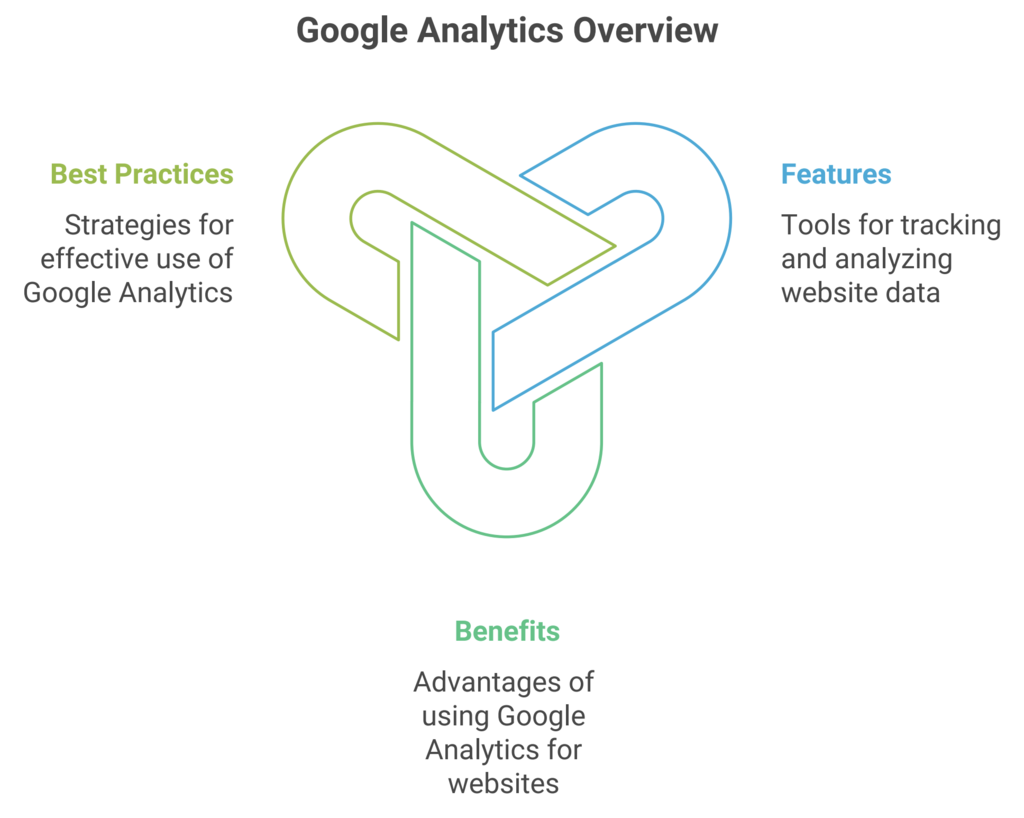Google Analytics: A Comprehensive Overview

What is Google Analytics?
Google Analytics is a free service offered by Google that allows users to monitor and analyzetheir website's performance. It provides detailed statistics about website traffic, userengagement, and conversion rates, helping businesses make data-driven decisions.

1. Key Features1. Real-Time Data:
Google Analytics allows users to see real-time data about website visitors, including the number of active users, their geographic locations, and the pages they are currently viewing.

2. Audience Insights:
Users can gain insights into their audience demographics, interests and behaviours, which can help tailor marketing efforts to better meet the needs of their target audience.

3. Traffic Sources:
The tool provides information on how visitors are finding the website,whether through organic search, paid ads, social media, or direct traffic.

4. Behavior Tracking:
Google Analytics tracks user interactions on the website, such aspage views, bounce rates, and session durations, allowing users to understand howvisitors navigate their site.

5. Goal Tracking:
Users can set up specific goals, such as form submissions or product purchases, to measure the effectiveness of their marketing campaigns and website performance.

Benefits of Using Google Analytics
- Data-Driven Decisions: By analyzing data, businesses can make informed decisions to improve their website and marketing strategies.
- Enhanced User Experience: Understanding user behavior helps in optimizing website design and content, leading to a better user experience.
- Cost-Effective Marketing: With insights into traffic sources and user engagement, businesses can allocate their marketing budget more effectively.

Best Practices for Google Analytics
1. Set Up Goals: Clearly define what actions you want users to take on your website and set up goals to track these conversions.
2. Use UTM Parameters: Implement UTM parameters in your URLs to track the effectiveness of specific campaigns and traffic sources.
3. Regularly Review Reports: Make it a habit to regularly review your Google Analytics reports to stay updated on website performance and user behavior.
4. Segment Your Audience: Use audience segmentation to analyze different user groups and tailor your marketing strategies accordingly.
5. Integrate with Other Tools: Consider integrating Google Analytics with other tools likeGoogle Ads and Google Search Console for a more comprehensive view of your online performance.
